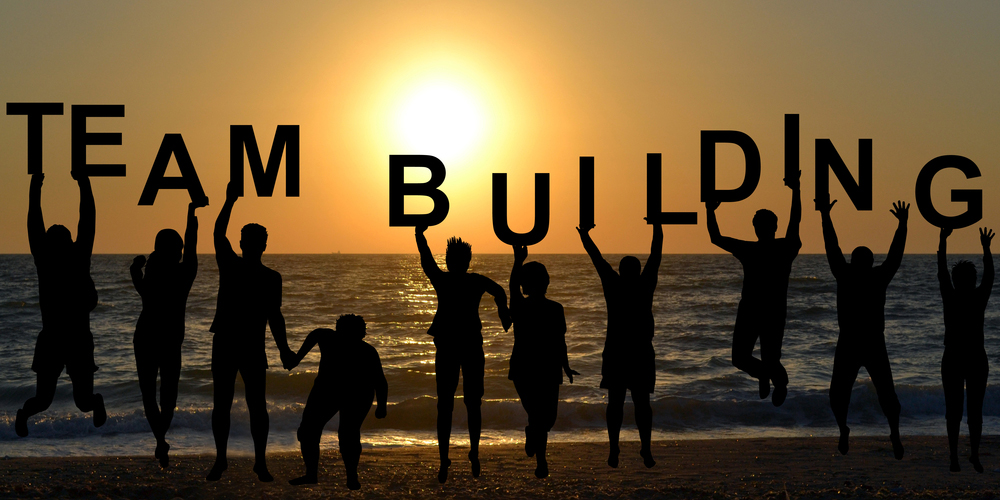Tell your staff you’re planning to do some teambuilding exercises and you’re likely to hear some groans and see a few eye rolls. Unfortunately, teambuilding exercises have a negative connotation in many workplaces. We say “unfortunate” because we believe teambuilding activities can be beneficial—when they are done effectively.
“Despite its reputation for being, well, lame, [teambuilding] is the most important investment you can make for your people,” says Brian Scudamore in an article for Forbes. “It builds trust, mitigates conflict, encourages communication, and increases collaboration. Effective [teambuilding] means more engaged employees, which is good for company culture and boosting the bottom line.”
In discussing the topic of teambuilding with industry expert Dick Axelrod, Founder of the Axelrod Group and Author of Let’s Stop Meeting Like This: Tools to Save Time and Get More Done, we tried to get some insights into whether teambuilding exercises work, the reasons they are or are not effective, and some best practices.
Do Teambuilding Activities Even Work?
Let’s start with the most relevant question: Do teambuilding exercises even work? According to Axelrod, that depends on how the training is structured. “[Teambuilding] never works when it is seen as an activity,” he says. “It’s like trying to bake a cake with only one ingredient. Cinnamon may taste good but without flour, eggs, sugar, water, baking powder, spices and heat it will never become a cake.” In other words, teambuilding activities alone shouldn’t be seen as a silver bullet for an organization’s teamwork problems.
Why Do So Many Companies Keep Doing What Doesn’t Work?
It makes sense that teambuilding exercises without complementary activities would not be sufficient for truly effective teambuilding, and we’ll talk more about what additional ingredients should be added to the teambuilding mix a bit later. But knowing that so many companies are ineffective in their teambuilding activities, it’s fair to ask why they keep doing what has been shown to fail over and over again? Often that boils down to simply not understanding what teambuilding is and is not. As Axelrod notes, many companies don’t spend enough time learning about the theories behind effective team development.
How Can Companies Make Teambuilding Activities More Appealing to Participants?
Because these activities aren’t as effective as they could be, many organizations find it difficult to get solid engagement and sometimes even participation from staff in employee teambuilding efforts. So, what are some strategies to boost that engagement? Again, it’s key to not see teambuilding activities as simply checking a box. “Stop thinking about [teambuilding] as an activity that can be done in twenty minutes and design [teambuilding] processes that are relevant to the team members and help to improve team functioning as a whole,” says Axelrod. “Think of teambuilding as a process not an event.”
What Kinds of Activities Generate the Best Results?
Of course, the effectiveness of a training session is important, but that effectiveness also greatly influences the willingness of employees to participate and engage in trainings as well. Teambuilding is no exception.
Axelrod recommends working through a structured process when developing, implementing, and evaluating the effectiveness of training efforts. “Start by interviewing all team members and people with whom the team interacts,” he suggests. “You can have someone from HR or Organization Development do the interviews. You can hire an outside consultant or you can ask team members to interview each other.”
Ask questions, he says, designed to determine the extent to which each team member agrees about the following elements of the team:
- The purpose of the team,
- The goals of the team,
- Team roles,
- How work should be done, and
- The kind of working relationships they desire.
After you’ve collected this information, review it with the team members. Axelrod recommends doing so in an off-site workshop, preferably a 2-day event.
In addition to reviewing those results, you should be asking the following questions:
- What does the information mean?
- What conditions give rise to this information?
- What would greatness look like for our team?
- What mutual expectations do we have of each other?
- What are the best ways for us to go about our work?
- What are we willing to do, individually and collectively, to achieve these goals?
- What are we not willing to do, individually and collectively, to achieve these goals?
- How might we prevent ourselves from being successful?
Document the answers to these questions and any team commitments that come out of the discussions. A few months after the retreat, Axelrod recommends reconvening to address the status of those agreements to see what is and what is not working and what, if anything, the team members need to do to continue their teambuilding efforts.
In terms of timing, Axelrod recommends doing teambuilding activities either at the beginning or the midpoint of a team project. When done at the beginning, these activities serve as a good way to acquaint the team, set expectations, and act as a jumping off point. When conducted at the midpoint, they serve to help correct any issues that may have arisen up to that point in the project.
Teambuilding activities often get a bad rap, but just because they aren’t always executed effectively doesn’t mean they don’t have a place in the employee development mix. The key is to not blindly use teambuilding exercises as substitutes for gaining a fundamental understanding of your organization’s teambuilding needs and working to address the specific issues holding your organization back.

